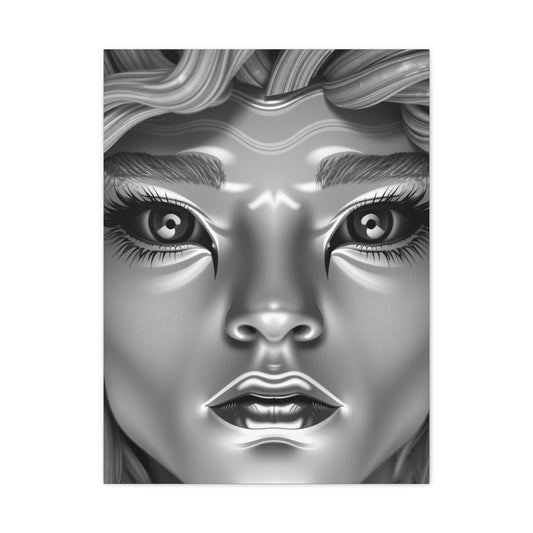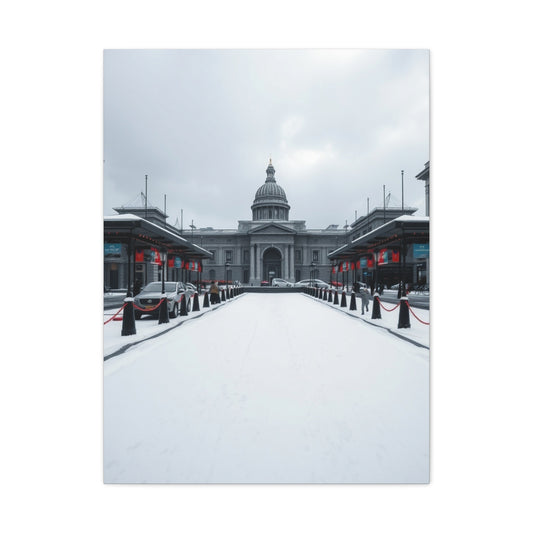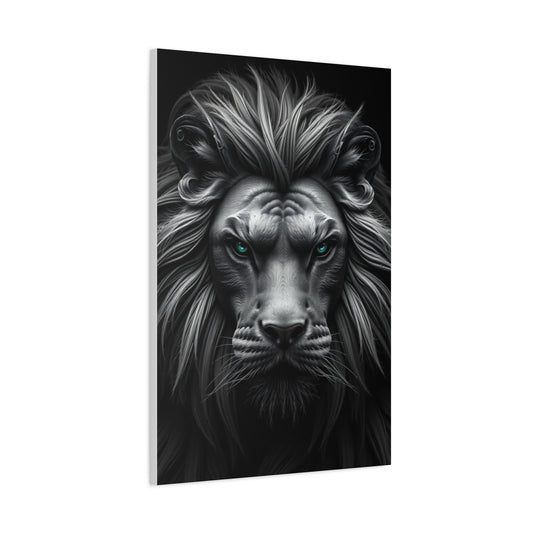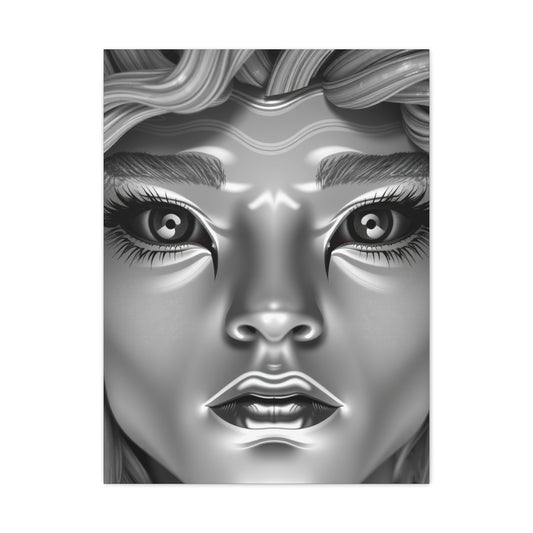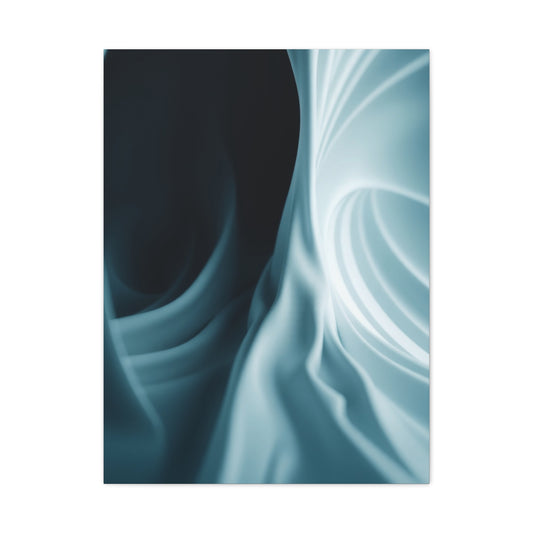Harmonious Gray and White Wall Art Concepts for Stylish Interiors
Gray and white wall decor offers a remarkable way to transform small spaces into tranquil sanctuaries. The interplay of these neutral tones can create a sense of expansiveness, subtly enlarging the perception of a room without overwhelming the senses. By carefully selecting shades, textures, and finishes, it is possible to cultivate an environment that is both calming and aesthetically compelling.
Understanding the Influence of Gray and White
Gray, in its myriad nuances from the palest silver to deep graphite, possesses an understated sophistication that can ground a room while allowing other design elements to shine. It carries a quiet versatility that enables it to complement virtually any style, whether modern, minimalist, or eclectic. White, conversely, evokes light, purity, and clarity. It is an ideal partner for gray, offering contrast that amplifies brightness and conveys a sense of openness. In combination, these two shades can orchestrate a balanced environment where serenity and elegance coexist.
The psychological effects of gray and white also play a pivotal role. Gray can invoke introspection and composure, whereas white fosters mental clarity and lightness. In small spaces, these attributes are especially valuable, as they can prevent feelings of confinement or visual clutter. Choosing the right balance of gray and white can turn an otherwise modest room into a haven of repose.
Selecting the Perfect Shades
The process of selecting gray and white hues is more nuanced than it might initially seem. Undertones within gray—whether cool, warm, or neutral—can dramatically influence the mood of a space. Cool grays with blue or green undertones tend to create a refreshing, airy ambiance, while warmer grays imbue a room with coziness and understated intimacy. Neutral grays offer a versatile canvas that harmonizes with both vivid and muted accents.
White, too, is multifaceted. Opting for a stark, icy white can generate a crisp, modern feel, whereas creams and off-whites introduce warmth and softness. In small rooms, lighter shades of gray paired with white can magnify natural light, producing an illusion of spatial generosity. Conversely, incorporating darker gray on accent walls can impart depth and a subtle sense of sophistication without overwhelming the room.
A helpful approach is to test multiple shades within the intended space, observing how lighting—both natural and artificial—interacts with the colors. Walls, furniture, and decor elements can then be orchestrated to achieve a harmonious equilibrium that enhances the overall ambiance.
Layering Textures for Visual Intrigue
While gray and white offer simplicity and elegance, integrating textures elevates the room from flat minimalism to a visually rich environment. Textures introduce tactile interest and can accentuate the subtle variations in neutral tones. For example, a gray wall with a slightly brushed or plastered finish can add dimension, preventing the color from appearing monotonous. Similarly, white walls with a matte or eggshell finish interact with light differently than glossy surfaces, creating nuanced shifts in perception.
Adding fabric and material elements further enriches the sensory experience. A gray knitted throw draped over a sofa can provide a cozy, inviting touch, while white ceramic vases or textured wall hangings lend sculptural sophistication. Layering textiles with contrasting tactile qualities—soft cotton, nubby linen, or plush velvets—introduces an intricate interplay that maintains interest without introducing chaos.
Even subtle metallic accents in silver or pewter can enhance the reflective qualities of gray and white, creating moments of gentle luminescence. These additions allow for a sophisticated interplay between matte and gloss, soft and rigid, ensuring the space feels thoughtfully curated rather than sterile.
Harmonizing Furniture with Wall Colors
Furniture selection is integral to reinforcing the serene atmosphere created by gray and white walls. Light-toned wooden furniture pairs beautifully with pale gray walls, offering warmth while maintaining a sense of openness. White furniture can accentuate brightness, serving as a complementary backdrop to darker gray elements. Choosing pieces with clean lines and minimal ornamentation reinforces a sense of spaciousness, particularly in compact areas.
Multifunctional furniture becomes especially advantageous in small rooms. Gray or white storage units, benches, or tables can double as display surfaces or seating, preserving visual simplicity while maximizing practicality. Avoiding overly ornate or dark-colored pieces prevents the space from feeling constricted or visually cluttered. By integrating furniture that aligns with the palette and purpose of the room, the overall environment remains cohesive and inviting.
Incorporating Subtle Contrasts
A key aspect of designing with gray and white lies in the nuanced use of contrast. The juxtaposition of light and dark shades, smooth and textured surfaces, or matte and reflective finishes can create depth without overpowering the senses. For instance, a mid-tone gray wall complemented by soft white molding or trim can delineate architectural features while maintaining a serene aesthetic.
Contrasts can also extend to smaller elements, such as accent pillows, rugs, or lighting fixtures. These additions, when carefully chosen, introduce visual focal points that draw the eye and add dimension. Subtle contrasts ensure that the room remains cohesive and serene, rather than jarring or chaotic, reinforcing the tranquil ambiance that gray and white naturally evoke.
Utilizing Natural Light
Natural light is a transformative component in spaces dominated by gray and white decor. The reflective properties of white surfaces amplify incoming sunlight, creating a luminous and airy atmosphere. Light gray walls can similarly bounce light around a room, enhancing the perception of spaciousness. Positioning mirrors strategically can further multiply light and visually expand the area, a particularly effective strategy in compact rooms or apartments.
Window treatments also influence how light interacts with gray and white interiors. Sheer white curtains allow light to filter gently while maintaining privacy, producing soft, diffused illumination that complements the calming palette. For areas requiring greater control over brightness, layering with semi-opaque shades or blinds in coordinating gray tones preserves the overall aesthetic while offering flexibility.
Creating Zones of Calm
In small spaces, defining areas for different activities can help maintain a sense of order and tranquility. Gray and white decor offers an ideal foundation for subtle zoning. For instance, a pale gray accent wall can delineate a reading nook, while a white backdrop enhances the openness of a living area. Rugs, throws, and cushions can further distinguish functional zones, providing visual cues without disrupting the cohesive palette.
Textural variety within these zones also supports a sense of calm. Combining soft fabrics, smooth ceramics, and polished or matte finishes encourages tactile engagement while maintaining serenity. By thoughtfully organizing spatial zones and layering materials, a small room can feel both structured and harmonious, allowing inhabitants to move freely and relax within a visually balanced environment.
Integrating Natural Elements
Complementing gray and white with natural elements introduces vitality and warmth. Plants, in particular, add life and color without overwhelming the neutral palette. Consider incorporating greenery in white ceramic pots or gray stone planters, allowing the foliage to stand out while maintaining harmony with the room’s design. Organic materials such as rattan, jute, or bamboo can also provide grounding textures that soften the austerity of monochromatic walls.
Natural elements can extend beyond decor items. Wooden frames, shelves, or subtle accents in stone or marble can imbue the space with an earthy, calming energy. When paired with gray and white, these elements create an elegant interplay of neutral tones, textures, and organic materials, enhancing the serene quality of the room while ensuring it remains inviting and livable.
Maintaining Balance Through Accessories
Accessories in gray and white interiors should emphasize subtlety and cohesion. Overloading a small space with decorative objects risks diminishing the calming effect of the color scheme. Thoughtfully curated items—such as minimalistic sculptures, simple vases, or monochromatic artwork—maintain the sense of serenity while providing visual interest.
Layering accessories at different heights and positions, such as on shelves, side tables, or mantels, creates a dynamic arrangement that feels intentional rather than cluttered. Neutral-toned books, small plants, or ceramic pieces can all contribute to this balanced decor, reinforcing the understated elegance that gray and white cultivate in compact spaces.
Elevating Interiors with Art and Decorative Elements
Integrating art and decorative elements into gray and white wall decor transforms a simple space into an expressive and captivating environment. In small rooms, where visual clutter can easily overwhelm, the thoughtful placement of artwork and carefully chosen accents can provide personality, depth, and aesthetic resonance. By harmonizing these elements with neutral tones, one can create a cohesive design that exudes serenity while remaining visually stimulating.
Selecting Artwork for a Harmonious Space
Art serves as a conduit for emotional expression within interiors dominated by gray and white. The choice of pieces should complement the overall palette while adding visual interest. Black-and-white photography, for instance, offers timeless elegance and a striking contrast against soft gray walls. Architectural shots, landscapes, or abstract compositions in monochrome can enhance the sophistication of a room without introducing discordant colors.
Abstract paintings in varying shades of gray and white can also produce dynamic textures and subtle focal points. These works allow the viewer’s gaze to wander, drawing attention to nuanced tonal shifts and the interplay of light and shadow. By selecting pieces that resonate with the intended mood of the room—whether contemplative, vibrant, or minimalistic—art can enrich the spatial narrative without overwhelming it.
Creating a Gallery Wall
A gallery wall is an effective method for personalizing a space while maintaining cohesion within a gray and white scheme. Carefully arranging framed prints, photographs, or small canvases can transform an empty wall into a curated visual experience. To avoid visual chaos, it is beneficial to select frames that echo the room’s color palette. White, gray, or black frames can provide uniformity, allowing the artwork itself to remain the focal point.
Layout is another critical factor. Symmetrical arrangements lend a sense of order and serenity, whereas asymmetrical patterns introduce a playful, organic quality. Incorporating a mix of horizontal and vertical frames, as well as varying sizes, can produce rhythm and balance. Small shelves interspersed with framed art can further break monotony and provide opportunities for layering decorative objects, such as miniature sculptures or plants.
Floating Shelves and Functional Decor
Floating shelves offer a versatile approach to enhancing gray and white interiors. Painted in coordinating shades of gray or white, they seamlessly integrate into walls while providing display surfaces. These shelves can accommodate books, small plants, ceramics, or curated collections of objects, transforming functional storage into a decorative feature.
Layering items on shelves, such as stacking books alongside delicate vases or framed photographs, creates depth and dimension. The careful selection of objects—favoring those with subtle textures, muted tones, or refined shapes—ensures the space remains uncluttered. Shelves can also be arranged in staggered or geometric patterns to introduce visual intrigue without compromising the room’s calm atmosphere.
Mirrors and Reflective Surfaces
In small spaces, mirrors serve both functional and aesthetic purposes. A well-placed mirror can amplify light, create the illusion of additional space, and complement the gray and white palette. Frameless designs offer sleek minimalism, while framed mirrors in subtle gray or white finishes introduce architectural detail.
Reflective surfaces can extend beyond mirrors to include metallic accents, glass objects, or glossy ceramic decor. These elements interact with light, producing gentle luminescence that enhances the neutral tones of walls and furnishings. By selectively incorporating reflective objects, one can elevate the sense of spaciousness while adding understated elegance to the room.
Sculptural and Three-Dimensional Accents
Three-dimensional decor introduces tactile intrigue and complexity. Sculptural wall hangings in neutral tones, such as white plaster reliefs or gray ceramic forms, can become focal points while maintaining harmony with surrounding elements. Wall-mounted shelves or ledges displaying small, textured objects create layers of interest that draw the eye and invite closer observation.
Textured panels, carved wood, or woven wall hangings add subtle rhythm and shadow play, providing visual richness without overwhelming the simplicity of the gray and white palette. By selecting pieces that incorporate natural materials, subtle patterns, or intriguing contours, one can achieve a sense of artistry that complements the serene ambiance.
Integrating Personal and Meaningful Items
Personal artifacts, when thoughtfully curated, enhance the warmth and individuality of gray and white interiors. Framed family photographs, keepsakes, or memorabilia can be harmonized with the color scheme through monochromatic printing or neutral frames. Incorporating items with sentimental value infuses the space with character and narrative, making it uniquely reflective of the inhabitant’s life and taste.
Maintaining visual restraint is key. Select a limited number of personal items to display, integrating them with other decorative elements to prevent clutter. When balanced with artwork, floating shelves, and textural accents, these meaningful pieces contribute to a cohesive environment that is both aesthetically pleasing and emotionally resonant.
Layering Textures within Wall Decor
Wall decor in gray and white interiors benefits from careful layering of textures. Combining smooth surfaces with tactile materials such as fabric, wood, or ceramic creates depth and sophistication. A gallery wall, for instance, can be enhanced by including three-dimensional elements, such as small relief sculptures or textured frames.
Textural contrast can also be achieved through the use of varied finishes. Matte paints, glossy ceramics, and metallic accents interact differently with light, creating subtle dynamism across the walls. This interplay of textures ensures that a gray and white space remains visually engaging while preserving its tranquil atmosphere.
Balancing Scale and Proportion
Incorporating art and decorative elements requires careful consideration of scale and proportion. Oversized pieces can dominate a small space, creating imbalance, whereas smaller items may become visually lost if not thoughtfully arranged. A harmonious approach involves mixing different sizes and heights, ensuring that each piece has room to breathe while contributing to the overall composition.
For example, a medium-sized framed print paired with a cluster of smaller objects on a floating shelf produces a layered, balanced effect. Grouping items in odd numbers—three or five—tends to feel more natural and aesthetically pleasing than even-numbered arrangements. This attention to proportion ensures that decorative elements enhance the space without overpowering it.
Utilizing Subtle Color Accents
While gray and white dominate the palette, subtle accents can enrich the visual narrative without compromising serenity. Muted tones, such as soft taupe, pale silver, or muted pastels, can be introduced through small decorative objects, art details, or textiles. These gentle infusions of color add warmth, depth, and visual interest, providing a delicate counterpoint to the neutrality of the walls.
The key is restraint. Accents should be understated, integrated in limited quantities, and harmonized with the surrounding elements. By carefully selecting these touches, the space gains dimension and personality while preserving the calming qualities inherent in gray and white decor.
Seasonal and Rotating Decor
One advantage of a gray and white palette is its adaptability. Changing decorative elements seasonally can refresh a space without requiring major alterations. Lightweight textiles, framed artwork, or small decor objects can be rotated to reflect the time of year, personal mood, or evolving aesthetic preferences.
For instance, winter may inspire the introduction of soft, textured whites and silvers, while spring could bring subtle greens or natural materials such as woven baskets or ceramic planters. This practice allows a room to feel dynamic and evolving, while maintaining the underlying harmony established by the gray and white walls.
Maintaining Minimalism and Cohesion
Even with diverse artwork and decorative elements, minimalism remains a guiding principle. Gray and white interiors thrive on simplicity, balance, and intentionality. Excessive ornamentation can disrupt the serenity of the space, creating visual noise that diminishes the calming effect of the neutral palette.
To maintain cohesion, each item should have a clear purpose or aesthetic contribution. Grouping similar materials, repeating shapes, or echoing color tones reinforces continuity. This method ensures that even a richly decorated wall maintains an organized, serene appearance, enhancing the overall sense of tranquility in the room.
Combining Functionality with Aesthetic Appeal
Decorative elements can also serve functional purposes, particularly in compact spaces. Floating shelves, wall-mounted lighting, or small storage solutions can double as artful installations. For example, a shelf displaying carefully chosen books and ceramics not only provides storage but also creates a sculptural visual display.
Similarly, wall-mounted hooks, racks, or organizers in coordinating gray or white finishes can contribute to decor while maintaining utility. The combination of functionality and aesthetic appeal allows the space to remain practical without sacrificing the elegance and harmony achieved through thoughtful gray and white design.
Geometric Patterns and Modern Minimalism
Geometric designs are an increasingly popular method for elevating gray and white walls. Utilizing painter’s tape, various shades of gray, and crisp white paint, one can create triangles, hexagons, or chevrons that produce a modern and structured appearance. The interplay of light and dark grays with white creates depth and visual intrigue, making the walls feel dynamic without overwhelming the space.
The precision of geometric patterns enhances the minimalist quality of a room, reinforcing the clean lines and uncluttered aesthetic that small spaces benefit from. Variations in pattern scale—from large, bold shapes to delicate, intricate designs—can influence perception, with larger shapes evoking expansiveness and smaller motifs introducing subtle detail.
This technique is particularly effective for accent walls. Painting a single wall with a geometric design draws attention and creates a sense of dimension, while the surrounding walls in solid gray or white maintain a calming, balanced environment. Such projects allow for customization, enabling the selection of shades and shapes that harmonize with furniture, textiles, and other decor elements.
Fabric Wall Hangings and Textural Art
Textile-based wall decor introduces softness and tactility, counterbalancing the smoothness of painted walls. Fabric wall hangings in gray and white can incorporate patterns, subtle gradients, or even three-dimensional elements such as tassels, knots, or weaving. These pieces lend warmth and comfort to small spaces, creating a layered visual effect that enhances serenity.
Macramé or woven wall hangings can be customized to suit any wall size. Choosing lightweight fabrics ensures the pieces remain easy to install and adjust, while combining multiple textures—such as cotton with linen or wool—adds depth. Hanging a textile piece on a gray wall can soften its visual austerity, while a white wall backdrop allows the intricacies of weaving or patterning to stand out.
Beyond purely decorative purposes, fabric wall hangings can also serve as acoustic dampeners, subtly improving the auditory comfort of a room, particularly in apartments or compact urban spaces. This functional benefit further enhances the appeal of DIY textile projects in gray and white interiors.
Upcycling and Personalized Frames
Repurposing existing materials offers an eco-friendly and inventive approach to wall decor. Old picture frames, for example, can be transformed by painting them gray or white and filling them with new art, quotes, or patterned paper. This practice allows for personal expression and customization while harmonizing with the overall color scheme.
Creating a cohesive gallery from upcycled frames can yield a charming, curated wall that reflects individuality without disrupting visual balance. Frames can be arranged symmetrically for order or asymmetrically for a more eclectic, dynamic appearance. Incorporating subtle textures, metallic finishes, or aged effects enhances visual depth and introduces nuance, ensuring that each frame contributes meaningfully to the composition.
Additionally, combining upcycled frames with small three-dimensional elements—such as pressed flowers, miniature sculptures, or fabric swatches—creates a tactile and multidimensional display. This approach highlights creativity while maintaining the calm, neutral palette central to gray and white decor.
Painted Murals and Accent Details
Murals offer an expressive avenue for DIY enthusiasts, particularly when executed with subtlety in shades of gray and white. Nature-inspired motifs, abstract designs, or even soft linear patterns can add personality to walls while preserving tranquility. The key is restraint: small-scale murals or gentle gradations in tone prevent the room from feeling overcrowded or visually chaotic.
Accent details, such as stenciled patterns along moldings or near ceilings, offer additional opportunities for creativity. These elements can introduce delicate ornamentation without overwhelming the primary color scheme, contributing to a sense of craftsmanship and intentionality. Utilizing removable or temporary paints allows homeowners to experiment freely, adapting the space as preferences or trends evolve.
Wall Decals and Peel-and-Stick Options
For those seeking a less permanent solution, peel-and-stick decals in gray and white provide flexibility and design versatility. These decals can take the form of abstract shapes, botanical silhouettes, or geometric motifs, transforming walls with minimal effort. Their adhesive nature allows for experimentation and repositioning, making them ideal for renters or those hesitant to commit to painted designs.
Decals can be layered strategically to create focal points or subtle visual rhythms. Combining them with textured elements such as wall hangings or floating shelves adds dimension, ensuring the walls feel intentional rather than flat. This technique is particularly useful in small spaces, where every design decision contributes significantly to the room’s overall balance.
Textured Plaster and Wall Treatments
Textured plaster treatments introduce depth and sophistication to gray and white walls. Techniques such as Venetian plaster, stucco, or sponged finishes create subtle shifts in tone and shadow, making walls visually engaging without introducing color discord. Light gray plastered walls, for instance, can appear luminous when paired with white trim, adding refinement to otherwise modest spaces.
These treatments also lend themselves to DIY experimentation. Simple techniques, like using a sponge or brush to manipulate wet plaster or paint, allow homeowners to produce unique effects that reflect personal taste. The interplay of texture and neutral tones results in walls that are not only aesthetically pleasing but also tactilely interesting, contributing to the overall sensory experience of the room.
Integrating Functional DIY Projects
DIY wall projects need not be purely decorative; they can also serve practical functions. Creating custom shelving in gray or white, for instance, provides storage while enhancing visual appeal. Shelves can be designed to display books, small plants, or personal artifacts, ensuring that utility and artistry coexist seamlessly.
Another functional approach involves creating wall-mounted organizers or hooks painted in coordinating shades. These elements provide convenient storage for everyday items while maintaining alignment with the overall color scheme. By combining function with aesthetic refinement, DIY projects reinforce the room’s harmony and practical livability.
Lighting as a Complement to Wall Projects
Thoughtful lighting amplifies the impact of DIY wall decor. Wall-mounted sconces, pendant lights, or subtle uplighting can accentuate geometric patterns, murals, or textured surfaces, producing soft shadows and highlighting nuances in tone. Warm white bulbs, in particular, complement gray and white walls by enhancing depth while maintaining a serene atmosphere.
Strategically placed lighting ensures that DIY projects are both visible and appreciable. Accent lighting can draw attention to focal points such as a fabric wall hanging, a geometric mural, or a cluster of upcycled frames, creating a curated and intentional display. This interplay between illumination and design is particularly effective in small spaces, where controlled lighting can enhance spatial perception and ambiance.
Personalization and Creative Freedom
DIY projects offer unmatched opportunities for personalization. Each wall can become a canvas for artistic expression, reflecting the inhabitant’s aesthetic preferences, experiences, or moods. From hand-painted patterns to repurposed frames and textured hangings, these creations ensure the space is uniquely reflective of its occupants.
Maintaining consistency with the gray and white palette ensures that individuality does not come at the expense of harmony. Thoughtful selection of shades, textures, and compositions allows for creativity to flourish while preserving the room’s serene, cohesive environment. By approaching DIY projects with intentionality, homeowners can achieve walls that are both expressive and visually balanced.
Incorporating Natural and Organic Elements
Even within DIY wall projects, integrating natural materials enhances warmth and depth. Driftwood frames, woven baskets, or pressed botanical prints complement gray and white walls, adding organic texture and grounding the neutral palette. These elements create a tactile contrast that emphasizes the subtle sophistication of the color scheme while introducing elements of the natural world into compact interiors.
Using natural materials in combination with geometric patterns, murals, or fabric hangings introduces a multidimensional quality. The juxtaposition of organic shapes and structured forms ensures that walls feel lively yet restrained, sophisticated yet welcoming. This synthesis of creativity and natural inspiration underscores the versatility of gray and white decor in small spaces.
Accessorizing with Textiles to Enhance Gray and White Interiors
Textiles are among the most effective tools for adding warmth, comfort, and sophistication to gray and white interiors. In small spaces, where each design element significantly impacts the room’s ambiance, carefully chosen fabrics can soften the starkness of neutral walls, introduce subtle patterns, and create layered visual interest. By selecting complementary materials and textures, textiles can elevate a space from minimalistic to inviting, transforming walls, furniture, and floors into a cohesive tapestry of elegance.
The Role of Textiles in Small Spaces
Gray and white wall decor inherently promotes a sense of calm and spaciousness, but without the addition of soft materials, a room may risk feeling cold or austere. Textiles—ranging from throw pillows and blankets to area rugs and curtains—introduce tactility and depth. They provide opportunities to experiment with patterns, subtle contrasts, and layered textures while maintaining the serenity of a neutral palette.
In small spaces, textiles also serve practical functions. Soft fabrics absorb sound, creating a quieter, more restful environment. They can delineate zones within multifunctional rooms, anchoring furniture and defining specific areas without the need for physical partitions. By thoughtfully incorporating textiles, homeowners can achieve both aesthetic and functional benefits in compact interiors.
Coordinating Throw Pillows
Throw pillows are one of the simplest yet most impactful ways to accessorize gray and white interiors. They allow for experimentation with pattern, texture, and subtle color variations, enhancing the visual interest of seating areas without overwhelming the room.
Mixing solid gray or white pillows with those featuring understated geometric patterns, stripes, or abstract motifs adds dimension while maintaining cohesion. Textures such as velvet, linen, or knitted fabrics introduce tactility, creating a sense of comfort that contrasts with the smoothness of painted walls or polished furniture surfaces.
Layering pillows in various sizes and shapes—square, rectangular, or round—further contributes to a dynamic arrangement. In small spaces, this technique draws attention to key seating areas, creating a focal point that complements gray and white walls while reinforcing the room’s overall serenity.
Incorporating Throws and Blankets
Throws and blankets provide both visual and tactile appeal. Draping a soft gray throw over a sofa or a white woven blanket across a chair introduces warmth and coziness, inviting relaxation in spaces that might otherwise feel sterile.
Choosing textiles with subtle patterns, like delicate herringbone weaves or tonal stripes, enhances visual texture without adding color discord. Layering throws in complementary shades can also produce a gradient effect, emphasizing depth and dimension in the room. In small spaces, these elements serve the dual purpose of decoration and comfort, making seating areas more inviting while aligning with the neutral aesthetic.
Area Rugs as Anchors
Area rugs are essential for defining zones within compact interiors. A soft gray rug under a seating area or a white rug near a reading nook can anchor the space, creating visual boundaries that organize the room. Rugs also provide textural contrast against hard floors, such as wood or tile, softening the environment and adding warmth.
Textural variety within rugs—shag, flatweave, or patterned low-pile—can complement gray and white walls while subtly introducing visual intrigue. Rugs with understated tonal patterns maintain cohesion with the neutral palette while preventing monotony. In small spaces, area rugs serve as both functional and aesthetic tools, enhancing comfort and reinforcing the harmonious interplay of gray and white elements.
Layering Window Treatments
Window treatments are another key avenue for enhancing gray and white interiors. Sheer white curtains allow natural light to filter softly into a room, creating an airy atmosphere that amplifies the openness of small spaces. Layering these with gray drapes or Roman shades introduces contrast and depth, offering flexibility in controlling privacy and light levels.
Textured fabrics, such as linen or cotton, contribute subtle tactility that balances smooth wall surfaces. Patterns should be kept minimal to avoid visual clutter, with soft stripes, delicate geometric motifs, or tonal gradients serving as effective options. By carefully layering window treatments, the room’s ambiance can be adjusted to suit mood, season, or functional needs while maintaining aesthetic harmony.
Upholstery and Furniture Fabrics
Furniture upholstery provides another opportunity to incorporate textiles strategically. Sofas, chairs, or ottomans in shades of gray or white create a unified backdrop for additional accessories. Introducing subtle patterns, tufting, or textured fabrics elevates the visual sophistication without introducing disruptive colors.
Mixing fabric finishes—velvet for richness, linen for casual elegance, or boucle for softness—adds tactile complexity and maintains visual intrigue. In small rooms, neutral furniture upholstery ensures that the space feels cohesive, while layered textiles, such as pillows or throws, allow for flexibility in style and personalization.
Curtains and Drapes as Statement Elements
While white curtains are ideal for preserving brightness, gray drapes can serve as statement pieces when chosen in rich, textured fabrics. Floor-length drapes create vertical lines that enhance perceived height, a valuable effect in compact spaces. Drapes with subtle metallic threads, woven textures, or tonal gradients can add sophistication without overwhelming the neutral palette.
Combining gray and white textiles in layered window treatments introduces harmony and rhythm, balancing light diffusion with visual interest. This strategy emphasizes the calm elegance of the overall design while offering functional control over natural light and privacy.
Incorporating Bedding and Linens
In bedrooms, gray and white textiles on beds provide both comfort and style. Layering sheets, duvets, and blankets in complementary shades produces a luxurious, cohesive appearance. Textured quilts, knitted throws, or embroidered linens introduce subtle complexity, enhancing tactile appeal and visual depth.
The careful use of monochromatic patterns—such as faint stripes, geometric motifs, or tonal gradients—maintains serenity while preventing the space from feeling monotonous. In small bedrooms, bedding becomes a central design element, reinforcing the neutral theme while offering comfort and warmth.
Accent Textiles in Small Decor
Smaller textiles, such as table runners, cushion covers, or wall-mounted fabric art, contribute to the layered aesthetic without overwhelming the space. These accents can echo the dominant color palette while introducing textural or pattern variations that draw the eye and provide nuance.
For instance, a gray and white woven table runner on a minimalist dining table or sideboard can introduce subtle contrast, tying the overall design together. Similarly, fabric-covered bulletin boards or decorative panels can add dimension to walls, blending functionality with aesthetic appeal.
Combining Textiles with Other Materials
Textiles interact beautifully with other materials in gray and white interiors. For example, soft fabrics juxtaposed with polished metals, glass, or ceramic surfaces create a balanced interplay of textures. Layering textiles over wooden furniture or alongside natural stone elements introduces warmth, grounding the neutral palette and preventing the room from feeling overly cold.
This thoughtful combination of materials ensures that gray and white walls serve as a versatile backdrop for creative expression. The interplay between soft and hard surfaces, smooth and textured finishes, enhances the sensory experience of the space, making it feel more inviting and refined.
Seasonal Rotation of Textiles
Gray and white interiors lend themselves to seasonal updates through textiles. Lightweight linens, sheer fabrics, and pale patterns can dominate in warmer months, while heavier wools, velvets, and textured throws enhance comfort during colder seasons. Subtle shifts in pattern or texture refresh the room without disrupting the neutral palette, allowing the space to feel dynamic yet cohesive year-round.
This practice also encourages experimentation with layering techniques. By rotating textiles according to season or mood, homeowners can maintain a fresh aesthetic while preserving the overall harmony of gray and white decor.
Textiles as a Bridge Between Elements
One of the most powerful functions of textiles in gray and white spaces is their ability to connect disparate elements. Rugs, curtains, bedding, and pillows can harmonize with walls, furniture, and decorative accessories, creating a unified visual language. By carefully coordinating shades, textures, and subtle patterns, textiles provide cohesion while introducing layered richness that enhances the sensory experience.
Maintaining Balance and Restraint
While textiles offer countless opportunities for creativity, maintaining restraint is essential in small spaces. Overloading a room with too many patterns or textures can disrupt the serene ambiance. Instead, a curated selection of complementary fabrics—each serving a functional or aesthetic purpose—ensures balance. Layering should be deliberate, with an emphasis on subtle contrasts and tonal harmony.
Enhancing Gray and White Interiors with Lighting
Lighting is a fundamental element in interior design, profoundly influencing the perception of space, color, and texture. In gray and white interiors, particularly in small rooms, lighting plays an essential role in highlighting walls, creating depth, and fostering ambiance. Thoughtful illumination can transform a neutral palette from flat or austere to inviting, dynamic, and visually rich. By combining natural, artificial, and accent lighting, homeowners can maximize the aesthetic potential of gray and white wall decor.
The Psychological Impact of Light
Light affects both mood and perception, making it a crucial consideration in compact interiors. Warm, diffused light can create a cozy, intimate atmosphere, softening the coolness of gray tones. Conversely, bright, crisp light emphasizes clarity, heightening the reflective qualities of white walls and enhancing the sense of spaciousness. The interplay between gray and white shades under different lighting conditions adds nuance and complexity, ensuring the space feels layered and dynamic rather than static.
In small rooms, lighting can manipulate the perception of scale. Well-placed illumination can make ceilings appear higher, walls seem further apart, and corners less confined. By understanding the psychological effects of light, homeowners can orchestrate an environment that feels both expansive and serene.
Natural Light as a Foundation
Natural light is the most influential element in gray and white interiors. Sunlight reflects off white surfaces, amplifying brightness and creating an airy, open feel. Light gray walls similarly interact with daylight, bouncing subtle tones across the room and adding dimension.
Window placement and size directly impact how natural light affects a space. Sheer white curtains or blinds allow light to diffuse softly, creating a gentle glow that emphasizes the subtle variations of gray paint. Layering window treatments—such as semi-opaque gray drapes over sheer white curtains—offers flexibility in controlling brightness while maintaining visual harmony.
Mirrors and reflective surfaces can further enhance natural light, multiplying its effect. A strategically positioned mirror opposite a window can illuminate dark corners, making the space feel more expansive. Reflective decor, such as glass vases, metallic frames, or polished ceramics, interacts with sunlight to create soft highlights, enriching the visual complexity of gray and white walls.
Artificial Lighting for Depth and Atmosphere
Artificial lighting allows for precise control over ambiance, particularly in rooms with limited natural light. Warm white bulbs complement gray and white interiors by softening cool tones, enhancing warmth, and creating a cozy environment. Neutral or daylight bulbs, on the other hand, emphasize crispness and clarity, making the space feel brighter and more energetic.
Layering lighting is crucial for achieving depth. Combining ambient, task, and accent lighting ensures that each area is appropriately illuminated while contributing to the overall aesthetic. Ambient lighting provides general illumination, task lighting focuses on functional areas, and accent lighting highlights specific features, such as wall art, textured surfaces, or architectural details.
Wall Sconces and Mounted Fixtures
Wall-mounted fixtures are particularly effective in small spaces, offering illumination without occupying floor area. Gray or white sconces can blend seamlessly with neutral walls, providing subtle lighting that enhances textures and tonal variations. Adjustable sconces offer flexibility, allowing homeowners to direct light where it is most needed, such as reading nooks, desks, or display areas.
Sconces also serve as decorative elements, complementing the overall design scheme. Sleek, minimalist designs reinforce modern aesthetics, while more ornate fixtures introduce visual interest and sophistication. By integrating form and function, wall-mounted lighting enhances both ambiance and style.
Pendant Lights and Statement Fixtures
Pendant lighting can serve as both illumination and artful focal points. In gray and white interiors, pendants with muted metallic finishes, matte textures, or soft geometric designs harmonize with the neutral palette while adding visual intrigue. Suspended over dining tables, seating areas, or workspaces, these fixtures create vertical interest, drawing the eye upward and emphasizing room height.
Clustered pendant arrangements allow for creative expression while providing functional lighting. Multiple pendants at varying heights can enhance rhythm and proportion, complementing the spatial flow of small rooms. Thoughtful selection of materials, shapes, and finishes ensures pendants enhance rather than overpower the subdued elegance of gray and white decor.
Accent Lighting for Focused Impact
Accent lighting highlights specific elements within a room, such as artwork, wall textures, or decorative objects. Track lighting, spotlights, or LED strips can illuminate focal points, drawing attention to gallery walls, geometric patterns, or textured murals. In gray and white interiors, accent lighting can reveal subtle tonal shifts and intricate details that might otherwise go unnoticed.
In small spaces, accent lighting also contributes to spatial perception. By highlighting vertical or horizontal planes, it can create an illusion of depth, making walls appear more expansive. Soft, indirect lighting prevents harsh shadows, maintaining the calming ambiance central to gray and white design.
Layering Light for Versatility
A layered lighting strategy combines multiple sources to create a flexible, dynamic environment. Ceiling lights provide general illumination, wall fixtures add localized brightness, and accent lights emphasize textures or objects. This approach allows homeowners to adjust the atmosphere according to function, time of day, or mood, ensuring the space remains comfortable and visually engaging.
Dimmers enhance versatility, allowing control over intensity and warmth. Subtle variations in brightness emphasize the interplay between gray and white, highlighting contrasts and softening transitions. Layered lighting ensures that small rooms feel open, inviting, and adaptable, reinforcing the serene qualities inherent in neutral decor.
String Lights and Ambient Illumination
String lights and fairy lights provide a whimsical, soft glow that enhances intimacy in compact interiors. Draped along walls, around artwork, or above seating areas, these lights create subtle points of interest while maintaining the understated elegance of gray and white decor.
LED strips can also be installed along shelves, behind furniture, or beneath floating fixtures to produce indirect illumination. This approach highlights architectural features and textures, adding depth and sophistication without introducing visual clutter. Ambient lighting, particularly when warm and diffused, accentuates the calming qualities of gray and white walls.
Highlighting Textures and Patterns
Lighting can accentuate the textures and patterns integrated into gray and white wall decor. Geometric murals, textured plaster, woven wall hangings, or fabric panels benefit from directional or angled lighting, which casts gentle shadows and emphasizes dimensionality.
Soft, well-placed illumination transforms flat surfaces into engaging visual experiences, revealing nuances in tone, pattern, and material. By considering the interaction between light and texture, homeowners can ensure that each element contributes to a cohesive and dynamic interior design.
Choosing Fixtures that Complement the Palette
Selecting lighting fixtures that harmonize with gray and white walls reinforces cohesion. Matte gray or white finishes blend seamlessly, while subtle metallic accents, such as brushed nickel or antique silver, introduce sophistication without overwhelming the neutral scheme. Minimalist designs maintain simplicity, whereas more ornate pieces can provide focal interest, balancing subtlety with personality.
The scale and proportion of fixtures are also critical. Oversized chandeliers or pendants can dominate a small space, while compact, thoughtfully designed options provide illumination and style in balance. Fixtures should enhance, rather than compete with, the calm elegance of gray and white interiors.
Integrating Natural and Artificial Light
The most effective lighting strategy integrates natural and artificial sources. Natural light can be maximized during the day with sheer curtains, reflective surfaces, and strategically placed mirrors. Artificial light complements daylight by filling shadows, highlighting textures, and creating ambiance during evening hours.
This integration ensures that gray and white walls maintain vibrancy and visual interest at all times. Controlled transitions between natural and artificial lighting prevent the room from feeling flat or monotonous, preserving the perception of depth, warmth, and spatial expansiveness.
Lighting for Functional Zones
In small spaces, lighting can define zones and enhance functionality. Task lighting, such as adjustable wall sconces, pendant lights over work areas, or under-cabinet strips, ensures practical illumination where needed. Ambient and accent lighting can delineate relaxation areas, reading corners, or display sections.
By layering light according to function, homeowners can maintain a cohesive aesthetic while optimizing usability. Each zone becomes visually distinct without disrupting the overall serenity of gray and white decor, reinforcing balance and harmony.
Conclusion
Gray and white wall decor offers an exceptional combination of elegance, versatility, and tranquility, making it an ideal choice for small spaces. It has become clear that the strategic use of these neutral tones can transform a compact room into a visually expansive, serene, and inviting environment. By thoughtfully layering textures, integrating personalized elements, and balancing light and shade, homeowners can create interiors that are both aesthetically sophisticated and functionally practical.
The calming quality of gray and white provides a foundation for a wide range of design possibilities. Lighter grays paired with crisp whites can reflect natural light, amplifying the sense of openness, while mid-tone and darker grays add depth and subtle drama. When combined with textured fabrics, sculptural wall art, or tactile wall treatments, these shades become more than mere background; they provide a dynamic canvas for artistic expression, personal artifacts, and decorative features. This interplay of textures ensures that spaces remain engaging without becoming visually overwhelming, a crucial consideration in smaller rooms.
Incorporating art and decorative elements further enhances the character of gray and white interiors. From gallery walls of black-and-white photography to abstract designs and upcycled frames, each element can be curated to tell a story, introduce focal points, or highlight architectural features. DIY wall projects, such as geometric murals, fabric hangings, and textured plaster, offer personalized creative outlets while reinforcing the neutral palette. These projects allow homeowners to experiment, express individuality, and elevate their interiors without compromising the room’s cohesive aesthetic.
Textiles, including throw pillows, blankets, rugs, and drapes, bring warmth and comfort to gray and white walls. By layering materials, patterns, and subtle tonal variations, textiles soften surfaces and enhance the tactile experience, making the space feel lived-in and welcoming. Complementing this, carefully planned lighting strategies—blending natural sunlight, wall-mounted fixtures, pendants, and accent lights—highlight textures, enhance depth, and foster ambiance. Proper lighting ensures that every corner is functional yet visually harmonious, reinforcing the calming and sophisticated nature of the palette.
Ultimately, gray and white wall decor is more than a design trend; it is a versatile framework that combines serenity, elegance, and practicality. By integrating careful shade selection, texture, art, textiles, and lighting, even the smallest spaces can feel expansive, harmonious, and reflective of personal style. This timeless palette offers endless possibilities, allowing every room to embody both tranquility and modern sophistication, creating interiors that are both beautiful and deeply inviting.

